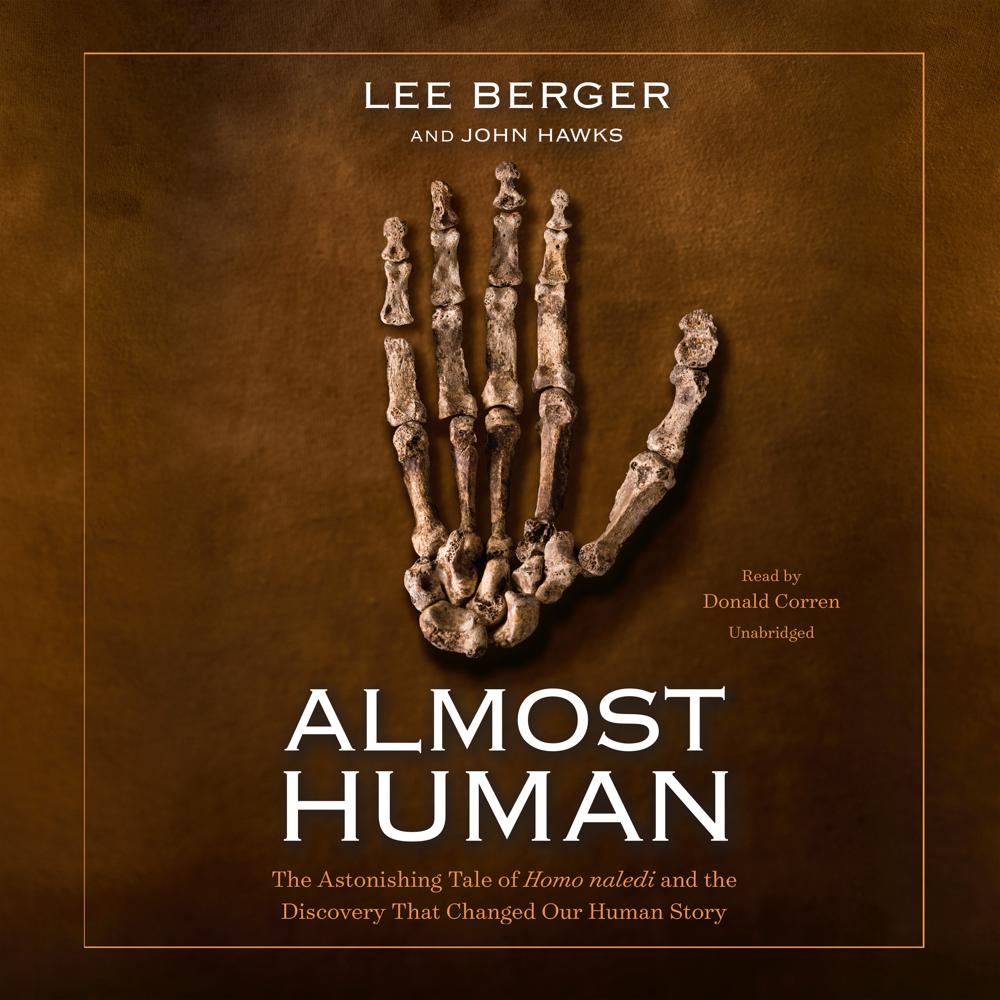
Almost Human
- Author Lee Berger, John Hawks
- Narrator Donald Corren
- Publisher Blackstone Publishing
- Run Time 6 hours and 34 minutes
- Format Audio
- Genre Anthropology, General and world history, Geographical discovery and exploration, Memoirs, Palaeontology, Rocks, minerals and fossils: general interest.
Titles Purchased
- 1-5
- 6-10
- 11-15
- 16-20
- Over 20
Price p/Title
- £7.99
- £6.99
- £5.99
- £4.99
- £3.99
Listen to a sample
What to expect
This first-person narrative about an archaeological discovery is rewriting the story of human evolution. A story of defiance and determination by a controversial scientist, this is Lee Berger’s own take on finding Homo naledi, an all-new species on the human family tree and one of the greatest discoveries of the twenty-first century.
In 2013, Lee Berger, a National Geographic explorer-in-residence, caught wind of a cache of bones in a hard-to-reach underground cave in South Africa. He put out a call around the world for petite collaborators—men and women small and adventurous enough to be able to squeeze through eight-inch tunnels to reach a sunless cave forty feet underground. With this team of “underground astronauts,” Berger made the discovery of a lifetime: hundreds of prehistoric bones, including entire skeletons of at least fifteen individuals, all perhaps two million years old. Their features combined those of known prehominids like Lucy, the famous Australopithecus, with those more human than anything ever before seen in prehistoric remains. Berger’s team had discovered an all new species, and they called it Homo naledi.
The cave quickly proved to be the richest prehominid site ever discovered, full of implications that shake the very foundation of how we define what makes us human. Did this species come before, during, or after the emergence of Homo sapiens on our evolutionary tree? How did the cave come to contain nothing but the remains of these individuals? Did they bury their dead? If so, they must have had a level of self-knowledge, including an awareness of death. And yet those are the very characteristics used to define what makes us human. Did an equally advanced species inhabit Earth with us, or before us? Berger does not hesitate to address all these questions.
Berger is a charming and controversial figure, and some colleagues question his interpretation of this and other finds. But in these pages, this charismatic and visionary paleontologist counters their arguments and tells his personal story: a rich and readable narrative about science, exploration, and what it means to be human.
Critics Review
-
“In short chapters…Berger relates how he used Google Earth as a geological aid to scour the South Africa and uncover natural chambers and new fossil sites…[along with] human-interest anecdotes and asides on the history of paleoanthropology…Berger’s finds are certainly interesting, and the H. naledi discovery is potentially groundbreaking.”
Publishers Weekly
More from the same
Narrator
Subscribe to our newsletter
Sign up to get tailored content recommendations, product updates and info on new releases. Your data is your own: we commit to protect your data and respect your privacy.